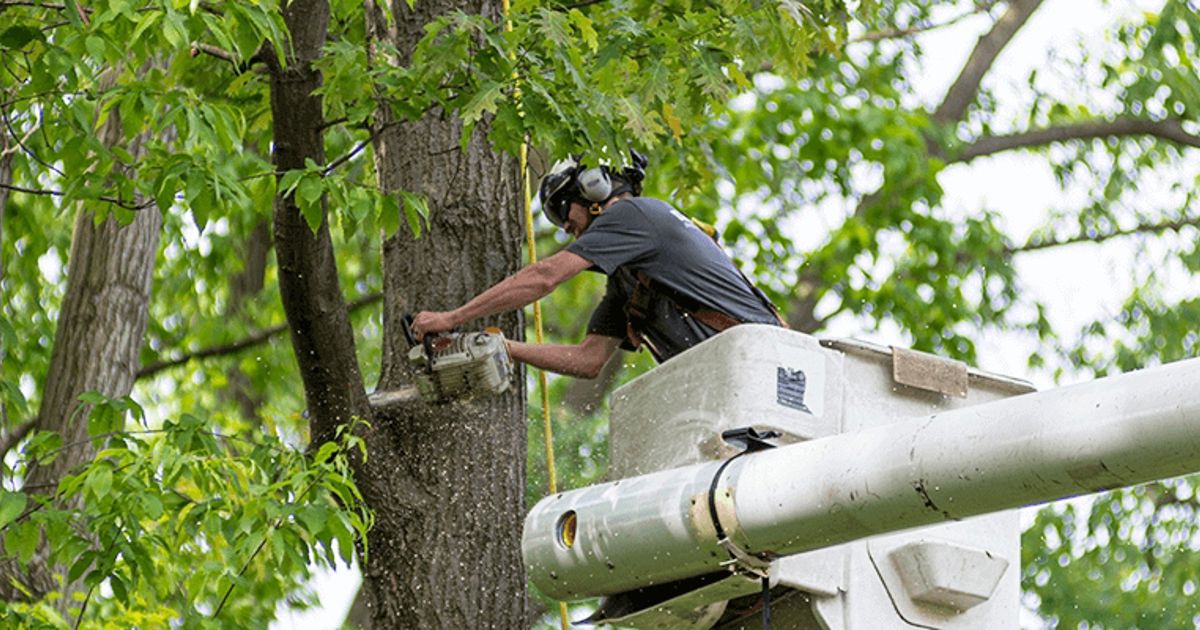Total Tree Removal Solutions in Guilford CT by RC Property Services
Understanding the Importance of Tree Preservation and Conservation Practices in Urban Areas
In the dynamic landscape of urban environments, trees often stand as silent guardians, providing a wide variety of benefits that expand much beyond their aesthetic charm. Comprehending the significance of tree preservation and conservation techniques in these areas is not simply an alternative strategy but an ecological consideration to promoting durable and lasting communities. As we explore the intertwined fabric of ecological, social, and economic advantages that urban trees provide, it becomes noticeable that their conservation is essential for the wellness of future and existing generations. Allow us start a trip to discover the crucial function that trees play in shaping the urban landscapes of tomorrow.
Environmental Advantages of Trees in Cities
Trees in urban areas play a crucial role in offering various ecological advantages, adding to the overall wellness of city slicker. One significant advantage is the enhancement of air quality. Trees function as natural filters, soaking up contaminants such as carbon monoxide, sulfur dioxide, and nitrogen dioxide, and launching oxygen into the ambience. This process assists minimize the focus of damaging gases, making the air cleaner and healthier for residents.

Additionally, trees add to water monitoring by reducing stormwater runoff and soil erosion. Generally, the ecological advantages of trees in cities are vital for producing lasting and habitable city environments.
Social Value of Urban Tree Preservation
In modern city landscapes, the preservation of trees holds considerable social importance for fostering neighborhood wellness and improving high quality of life. Urban tree preservation plays an important role in developing spaces for social communication and area involvement.

Economic Worth of Tree Conservation
The preservation and preservation of urban trees provide significant economic advantages that add to the general economic health of cities and neighborhoods. Urban trees provide a wide variety of economic benefits that positively affect local economic climates. One considerable financial benefit of tree preservation is the rise in residential property values. Trees enhance the visual allure of communities, leading to higher home worths and drawing in possible customers or lessees. In addition, urban trees help in reducing energy expenses by providing color in the summertime and functioning as windbreaks in the winter, thus reducing the demand for heating and cooling systems.
Furthermore, trees play a vital function in lowering stormwater drainage and reducing the effects of flooding, which can result in price savings for cities in terms of framework repair and maintenance. Urban trees also add to boosted air top quality by absorbing contaminants and launching oxygen, resulting in potential cost savings in health care expenses associated with breathing health problems. By investing and identifying in the financial value of tree preservation, cities can advertise lasting development, enhance lifestyle, and produce go now more resistant urban settings.
Techniques for Sustainable Urban Tree Monitoring
An extensive strategy to lasting city tree monitoring involves incorporating varied approaches that prioritize long-term ecological health and wellness and neighborhood well-being. Carrying out tree inventories and assessments is critical to recognize city tree populaces, their health, and maintenance needs.
Community involvement plays a critical role in sustainable urban tree administration. Enlightening homeowners about the advantages of trees, arranging tree growing events, and involving volunteers in tree care activities promotes a sense of ownership and stewardship. Collaboration between neighborhood federal government, ecological companies, and citizens is crucial to developing and implementing reliable tree administration plans.
Purchasing green infrastructure, such as metropolitan forests and green roofings, can supply multiple benefits, consisting of enhanced air top quality, stormwater administration, and metropolitan warmth island reduction. tree removal. Integrating trees into city planning and layout visite site procedures ensures that trees are valued as essential elements of a healthy and balanced and resistant city setting
Area Participation in Tree Conservation
Neighborhood participation is a basic part in fostering sustainable city tree monitoring methods and making certain the long-lasting wellness and conservation of metropolitan tree populaces. Involving the neighborhood in tree conservation initiatives can bring about boosted understanding, admiration, and stewardship of trees within city locations. When residents actively take part in tree preservation, planting, and maintenance initiatives, they create a feeling of possession and satisfaction in their regional setting.
Area participation likewise advertises social communication and collaboration amongst homeowners, local authorities, and environmental organizations, cultivating a common obligation for metropolitan tree helpful resources preservation. By arranging tree growing events, educational workshops, and volunteer opportunities, neighborhoods can function with each other to improve the metropolitan tree cover and create greener, much healthier cities.
Conclusion
To conclude, metropolitan tree conservation and conservation practices play an important function in boosting the environmental, social, and economic wellness of cities. By acknowledging the value of trees in city areas and applying lasting management strategies, communities can delight in the various benefits that trees give. It is essential for stakeholders to proactively get involved in tree conservation efforts to make certain a greener and healthier city environment for future and present generations.
